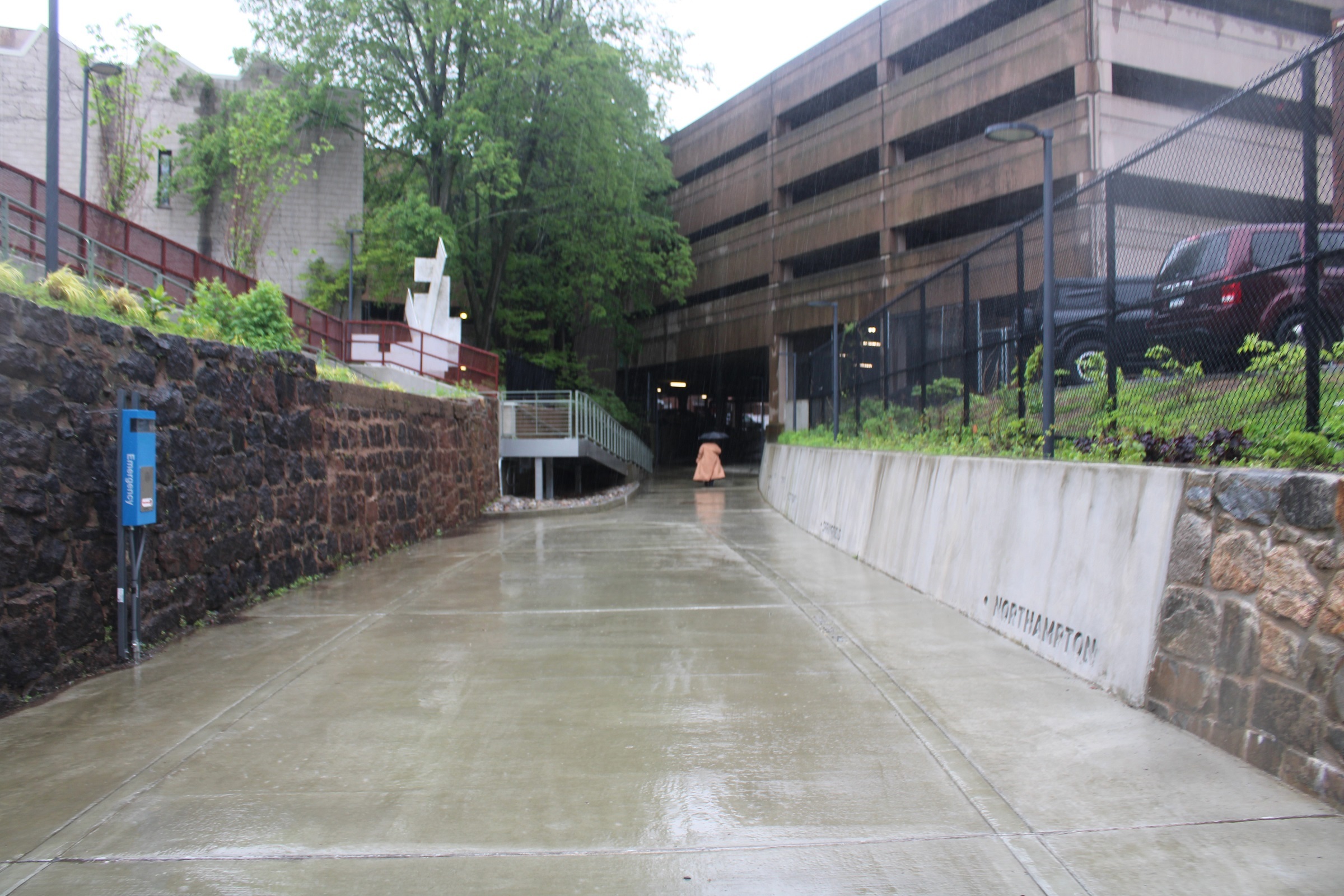
Thomas Breen photo
One of the first bike riders to use the newly opened trail.

Welcome to Farmington Canal Phase IV.
Decades of advocacy, hard work, easement negotiations, delays, and persistence culminated Friday morning with a ribbon cutting in a tunnel under Whitney Avenue — marking the official opening of the final downtown stretch of the Farmington Canal Heritage Trail.
Mayor Justin Elicker, City Plan Director Laura Brown, U.S. Rep. Rosa DeLauro, Downtown Alder Eli Sabin, and Farmington Canal Rail-to-Trail Association Board Member Aaron Goode, among many other past and present city workers and cycling advocates, gathered in the newly renovated tunnel to celebrate the completion of what has long been known as Phase IV of the bicycle and pedestrian trail’s New Haven buildout.
The trail runs 80 miles from Northampton to New Haven, with unfinished sections remaining in Southington and Plainville.
It long dead-ended in a closed gate and tunnel just east of Temple Street.
With Friday’s ribbon cutting and gate opening, the trail now goes through the remaining downtown below-grade sections past Whitney Avenue near Audubon Street and down to Grove Street. It then rises at street level on Grove Street and continues to Olive, Water, and to Brewery streets, and over to Long Wharf Drive.
Brown, whose department oversaw the completion of Phase IV, said that the tunnel underneath Whitney Avenue will remain open 24 hours a day. Asked about public safety, she said the newly opened stretch of the canal trail has video cameras and “blue phones.” Plus, she said, the more people who use this trail, the more foot and bike traffic it gets, the safer it will be.
“This is a long time coming and a really exciting moment,” said Mayor Justin Elicker, in what would become a refrain among every speaker who took the mic Friday’s presser.
Planning for Phase IV began in 2009, and construction began in 2021. Advocacy around converting New Haven’s stretch of the early 19th-century canal-turned-rail line into a walking and biking trail, meanwhile, began in the mid-1980s.
Friday’s opening bears the fruit of “decades of persistence,” Brown said, as well as the day-to-day work of “slogging through the details” by city employees on how to get this part of the trail open.
Elicker noted that Phase IV spanned three mayors and three City Plan directors. A city press release sent out in advance of Friday’s ribbon cutting states that the $12 million, 1.6‑mile project was financed through a combination of federal and state funds as well as money secured through a development agreement between the city and Yale.
“Trails bring us together,” Brown said. This trail in New Haven “was a very significant financial investment, but it is the kind of investment that will pay off.” She described the trail — Phase IV as well as all 4.59 miles that run through New Haven — as not just a linear park to be enjoyed in the present, but also a “gift to our future generations.”
Goode, who has advocated for years for the expansion, maintenance, and use of the canal trail, described Friday’s opening as “a BFD.” Goode ran through the two centuries of history and innovation that define the trail, from William Lanson’s retaining walls to the engineering of Benjamin Wright and the investments of James Hillhouse.
He also paraphrased the medieval Jewish philosopher and rabbi Maimonides when describing how he would respond in recent years to questions about when the canal trail’s Phase IV would be complete. When people would ask Maimonides if the messiah was coming, Goode said, the rabbi would say the messiah “is in transit. He’s on his way. But he may tarry a little.”

Thomas Breen file photo
City Plan Director Laura Brown: This is a "gift to our future generations."

Aaron Goode ...

... and Mayor Elicker celebrate a part of the trail that has been a long time coming.

Looking northwest towards Whitney ...

... and southeast towards Grove.


The former terminus of the canal trail, now the entryway to Phase IV.